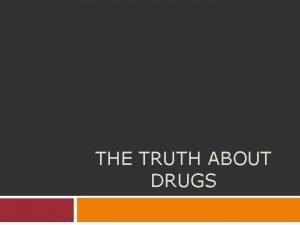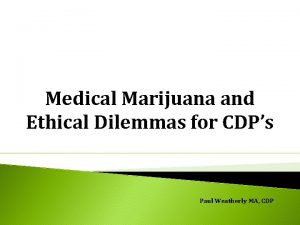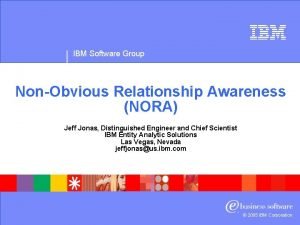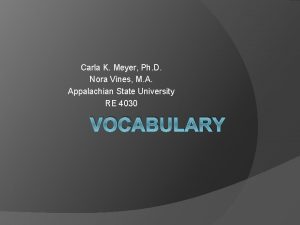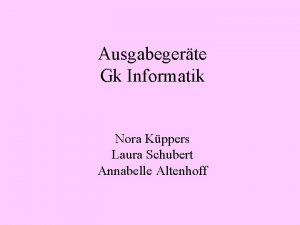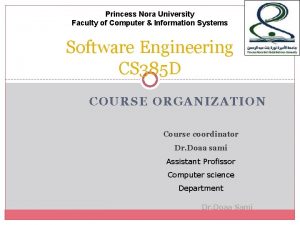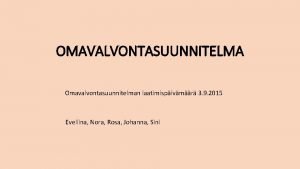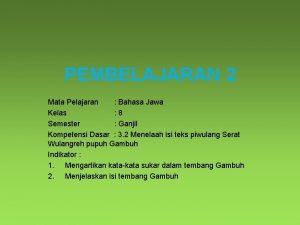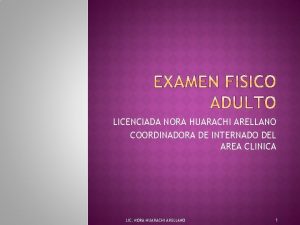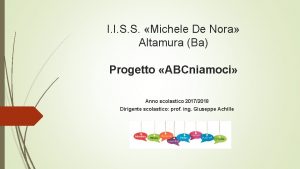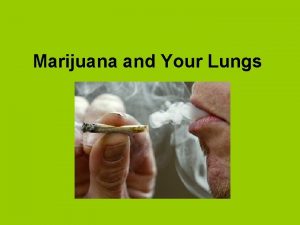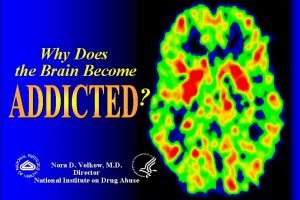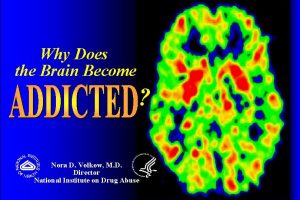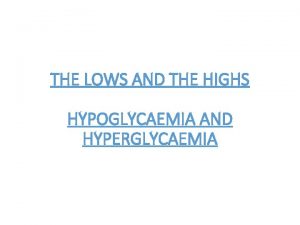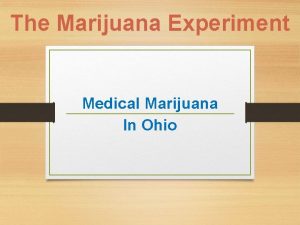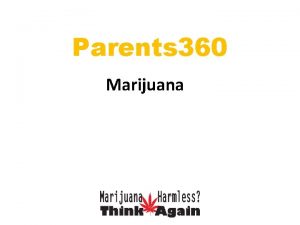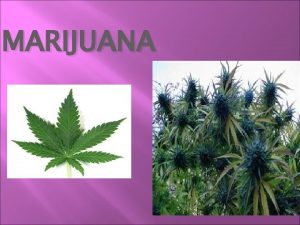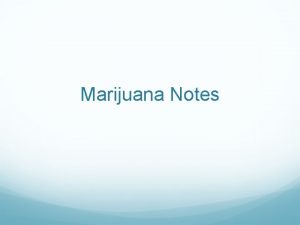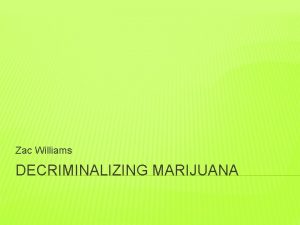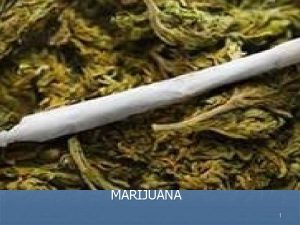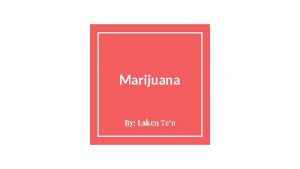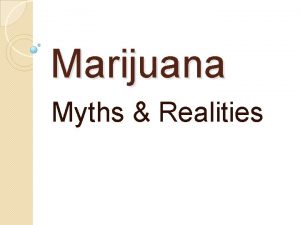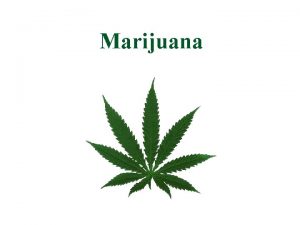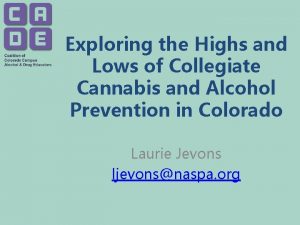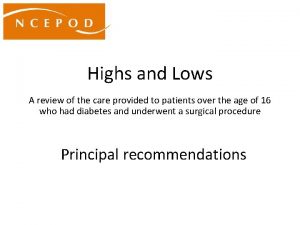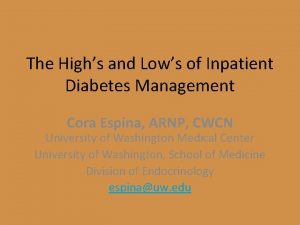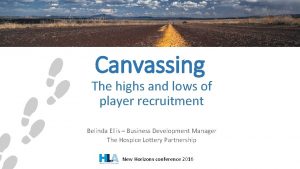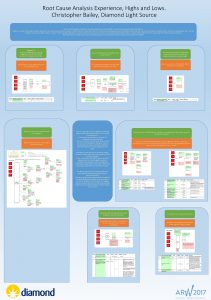Marijuana The Highs and Lows Nora D Volkow
















![MP Induced Changes in [11 C]Raclopride (DA Marker) in Marijuana Abusers and Negative Emotionality MP Induced Changes in [11 C]Raclopride (DA Marker) in Marijuana Abusers and Negative Emotionality](https://slidetodoc.com/presentation_image_h2/9f6cd800b3021775931c6d2119f88d5b/image-17.jpg)











![PET images of [11 C]-NE 40 (CB 2 R radioligand) Ahmad et al. , PET images of [11 C]-NE 40 (CB 2 R radioligand) Ahmad et al. ,](https://slidetodoc.com/presentation_image_h2/9f6cd800b3021775931c6d2119f88d5b/image-29.jpg)

- Slides: 30

Marijuana: The Highs and Lows Nora D. Volkow, MD Director

Marijuana is the Most Commonly Used Illicit Drug In the U. S. • Over 114 million Americans have tried it at least once • An estimated 2. 4 million Americans used it for the first time in 2013 Tetrahydrocannabinol (THC) Active Ingredient in Marijuana 2013 National Survey on Drug Use and Health, SAMHSA, 2014.

Percentage in each age group who develop first-time dependence ADDICTION IS A DEVELOPMENTAL DISEASE it starts in adolescence and childhood 1. 8% TOBACCO 1. 6% 1. 4% THC ALCOHOL 1. 2% 1. 0% 0. 8% 0. 6% 0. 4% 0. 2% 0. 0% 5 10 15 21 25 30 35 40 45 50 55 60 65 Age at tobacco, at alcohol and at cannabis use dependence as per DSM IV NIAAA National Epidemiologic Survey on Alcohol and Related Conditions, 2003.

Percentage of U. S. 12 th Grade Students Reporting Past Month Use of Cigarettes, Marijuana and Alcohol 60 50 Alcohol 40 30 Marijuana 20 10 Cigarettes 0 91 92 93 94 95 96 97 98 99 00 01 02 03 04 05 06 07 08 09 10 11 12 13 14 SOURCE: University of Michigan, 2014 Monitoring the Future Study.

nucleus accumbens VTA/SN AMPHETAMINE % of Basal Release frontal cortex % of Basal Release Natural and Drug Reinforcers Increase Dopamine in NAc 1100 1000 900 800 700 600 500 400 300 200 100 0 0 % of Basal Release 2 3 4 5 hr MARIJUANA 150 125 100 0 200 Drugs of abuse increase DA in the Nucleus Accumbens, which is believed to trigger the neuroadaptions that result in addiction 1 20 40 60 Tanda, et al, Science 1997. 80 FOOD 150 100 50 0 Empty Box Feeding 0 60 120 Time (min) 180 Di Chiara et al.

Constituents of MJ and the Cannabinoid System delta-9 -tetrahydrocannabinol delta-9 -tetrahydrocannabivarin delta-8 -tetrahydrocannabinol cannabigerol cannabinol cannabichromene cannabidiol

Cannabinoid Receptors Are Located Throughout the Brain and Regulate: • Brain Development • Memory & Cognition • Motivational Systems • Appetite • Immunological Function • Reproduction • Movement Coordination • Pain Regulation & Analgesia . . . . . . . . . . . . & Reward . . . . . . . . . . . . . . . . . . . . .

Long Term Effects of Marijuana Addiction: About 9% of users may become dependent, 1 in 6 who start use in adolescence, 25 -50% of daily users Estimated Prevalence of Dependence Among Users * * * Nonmedical Use Source: Anthony JC et al. , 1994

Odds Ratio Drug Use Outcomes in Twin Pairs (n =234) Discordant for Cannabis Use Before Age 17 Source: Lynskey, MT et al. , JAMA, 289, pp. 427 -433, 2003.

Does marijuana use negatively affect the developing brain and an individual’s personal trajectory into adulthood?

Cannabis Use and Later Life Outcomes Are Dose Dependent 400+ % welfare dependent (ages 21 -25) % Unemployed (ages 21 -25) 300 to 399 200 to 299 100 to 199 1 to 99 Never mean personal income in thousands of NZ $ at age 25 # of occasions using Cannabis agesusing 14 -21 Number of occasions Cannabis between ages 14 -21 % gained university degree by age 25 Source: Fergusson and Boden. Addiction, 103, pp. 969 -976, 2008.

Frequency Of Cannabis Use Before Age 17 Years and Adverse Outcome (30 years age) (n=2500 -3700) Consistent and dose-response association were found between frequency of adolescent cannabis use and advers outcomes 20 Less than Monthly Adjusted Odds Ratios 18 Monthly or More 16 1, 4 1, 2 Weekly or More 14 1 Daily 12 0, 8 10 8 0, 6 6 0, 4 4 0, 2 2 0 0 Cannabis Dependence Other Illicit Drug Use Suicide Attempt High School Degee Depression Welfare Completion Attainment Dependence Silins E et al. , The Lancet September 2014.

Persistent Cannabis Users Show Neuropsychological Decline from Childhood to Midlife Tested for IQ at age 13 and 38 y. Tested THC use ages 18, 21, 26, 32 and 38 y Change in Full-Scale IQ (in standard deviation units) Dunedin prospective study of 1037 Ss born 1972/73, 0. 4 Adolescent Vulnerability 1 Diagnosis 2 Diagnoses p=. 44 p=. 09 3 Diagnoses 0. 2 0 -0. 2 -0. 4 -0. 6 -0. 8 Cannabis Dependent Before Age 18 (n=17) Not Cannabis Dependent Before Age 18 (n=57) Cannabis Dependent Before Age 18 (n=12) Not Cannabis Dependent Before Age 18 (n=21) p=. 02 Cannabis Dependent Before Age 18 (n=23) Not Cannabis Dependent Before Age 18 (n=14) Source: Meier MH et al. , PNAS Early Edition 2012.

Early (<18 y) Long-Term Cannabis Use Decreases Axonal Fiber Connectivity Precuneus to splenium Fimbria of hippocampus, hippocampal commissure and Splenium Axonal paths with reduced connectivity (measured with diffusion-weighted MRI) in cannabis users (n=59) than in controls (N=33). Zalesky et al Brain 2012.

AMOTIVATION & THC

DA Synthesis Capacity in Cannabis Abusers Reduced striatal DA synthesis capacity in cannabis users relative to controls 18 F Striatal DA synthesis and apathy (AES-S score) DOPA Bloomfield et al. , Psychopharm 2014.
![MP Induced Changes in 11 CRaclopride DA Marker in Marijuana Abusers and Negative Emotionality MP Induced Changes in [11 C]Raclopride (DA Marker) in Marijuana Abusers and Negative Emotionality](https://slidetodoc.com/presentation_image_h2/9f6cd800b3021775931c6d2119f88d5b/image-17.jpg)
MP Induced Changes in [11 C]Raclopride (DA Marker) in Marijuana Abusers and Negative Emotionality Healthy Controls (N=24) PL > MP Marijuana Abusers (N=24) PL > MP Reduced DA reactivity in VS in Marijuana abusers is associated with negative emotionality (NEM) Volkow et al. , PNAS 2014

Effects of THC on Mental Illness

Marijuana Abusers Controls Van Loere et al. , 2007. ACC/CBL Cannabinoid CB 1 Receptors in Human Brain are Downregulated in Marijuana Abusers Hirvonen et al. , Mol Psychiatry 2013.

CB 1 R are Increased in Schizophrenics CB 1 R (dl. PFC) 20% higher in schizophrenics than controls Increases in CB 1 R in schizophrenics wer associated with psychosis severity Jenko et al. , Schizophr Res 2012 Treated Wong et al. , Neuroimage 2010 Schizophrenics > Controls Not Treated Ceccarini , et al. , Neuroimage 2013

Brain abnormalities associated with long-term heavy cannabis use Hippocampus Amygdala Yucel et al. , Arch Gen Psychiatry. 2008 L (yellow) and R (blue) amygdala L(red) and R(green) hippocampus Hippocampus and amygdala volumes smaller in cannabis users than controls and this has been linked with impaired memory perfprmance Lorenzeti et al. . , Biological Psychiatry 2015

Schizophrenics have Smaller Hippocampus and Amygdala Areas in Hippocampus and Amygdala were volumes were smaller in schizophrenics than controls Prestia et al. , Am J Geriatr Psychiatry 2015. Hippocampus/Amygdala volumes correlated with psychosis in schizophrenics (closed) and bipolar patients (open) Watson et al. , Brain Imaging Behav. 2012.

Cannabis-Associated Psychosis Study of Swedish Conscripts (n=45570) Andréasson et al Lancet, 1987. Odds Ratio 30 Cases per 1, 000 Regular Cannabis Use Increases Schizophrenia Risk in those with AKT 1 rs 2494732 genotype AKT 1(T/T) AKT 1(C/C) 20 10 0 0 1 10 <50 >50 2 No of times cannabis taken AKT 1(T/T) Effect of High Potency Cannabis on Risk of Psychosis Odds ratio 5. 4* 6 1, 6 Cannabis users by age 15 years age 18 years Arseneault et al BMJ 2002 AKT 1(C/C) GXE model: p*=0. 014 Risk of schizophrenia-like psychosis at age 26 years 4, 5 AKT(C/T) Di Forti et al. , Biological Psychiatry, 2012. Prospective Dunedin study (n=1037) 9 8 7 6 5 4 3 2 1 0 Never used cannabis Used cannabis at week ends or less Used cannabis everyday 5 4 3 2 1 0 Never used cannabis Hash<than weekly Hash at week ends Hash daily Skunk<than weekly 1 Skunk at week ends 1. 9) 2. 7* 0, 91 0, 620000002 0, 49 Adjusted OR Di Forti M et al. , The Lancet published online February 18, 2015.

THC OF TODAY

Increases over Time in the Potency of Tetrahydrocannabinol (THC) in Marijuana and the Number of Emergency Department Visits Involving Marijuana, Cocaine, or Heroin Volkow ND et al. , NEJM 370(23), June 5, 2014.

Mean Concentrations of THC, Ethanol & Amphetamines In Whole Blood Samples From Drivers Apprehended By The Police Suspected Of Driving Under The Influence Amphetamine & Methamphetamine THC Ethanol Vindenes V et al. , Forensic Sci Internati 2013; 226(1– 3): 197 -201.

SUBSTANCE ABUSE IS PREVENTABLE 12 th Graders’ Past Year Marijuana Use vs. Perceived Risk of Occasional Marijuana Use 100 80 60 40 20 0 75 77 79 81 83 85 87 89 91 93 95 97 99 01 03 05 07 09 11 13 Past Year Use Perceived Risk SOURCE: University of Michigan, 2013 Monitoring the Future Study

Adolescent Brain Cognitive Development National Longitudinal Study NIDA, NIAAA, NCI, NICHD, NIMH, NINDS, OBSSR Ten year longitudinal study of 10, 000 children from age 10 to 20 years to assess effects of drugs on individual brain development trajectories
![PET images of 11 CNE 40 CB 2 R radioligand Ahmad et al PET images of [11 C]-NE 40 (CB 2 R radioligand) Ahmad et al. ,](https://slidetodoc.com/presentation_image_h2/9f6cd800b3021775931c6d2119f88d5b/image-29.jpg)
PET images of [11 C]-NE 40 (CB 2 R radioligand) Ahmad et al. , Mol Imaging Biol. 2013 A

Subcortical Structures Differences Between Regular Marijuana Users and Nonusers Weiland B J et al. J. Neurosci. 2015; 35: 1505 -1512
 From the highest of heights to the depths of the sea
From the highest of heights to the depths of the sea Polar lows
Polar lows Brown weeds
Brown weeds Medicalmarijauna ohio gov
Medicalmarijauna ohio gov Became marijuana state
Became marijuana state Should marijuana be a medical option
Should marijuana be a medical option Lungs marijuana
Lungs marijuana Halucinogens
Halucinogens Medical marijuana ethics
Medical marijuana ethics What is torvald's attitude toward borrowing money?
What is torvald's attitude toward borrowing money? Karle gree
Karle gree Nora egan
Nora egan College king nora
College king nora Nora schindler
Nora schindler Non-obvious relationship awareness
Non-obvious relationship awareness Warty nora
Warty nora Nora vines
Nora vines Dr laura schubert
Dr laura schubert Nora cechovsky
Nora cechovsky Nora vartanyan
Nora vartanyan Nora henriksen
Nora henriksen Nora muotio
Nora muotio Princes nourah university
Princes nourah university Princess nora university
Princess nora university Nora schindler
Nora schindler Cecilia boisier
Cecilia boisier Pitutur tembang gambuh pada 3
Pitutur tembang gambuh pada 3 Epifura
Epifura Nora mulvaney
Nora mulvaney Nora ntu
Nora ntu Iiss michele de nora
Iiss michele de nora







